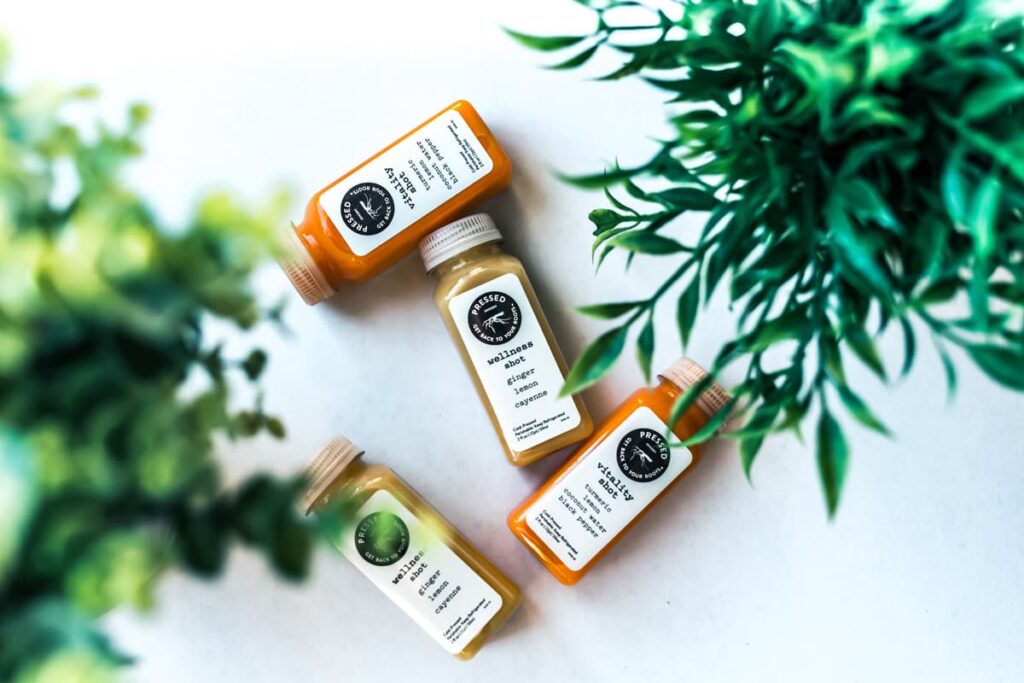Have you ever launched a product with high expectations, yet the results just didn't land the way you imagined? Or maybe you're eyeing a new market but struggling to understand what truly motivates your audience. These situations often stem from a single problem: not having deep, actionable consumer insights.
Understanding your consumers isn't optional anymore. It's critical. Yet many brands still rely on surface-level data or assumptions when building products, crafting messages, or planning campaigns. The result? Products miss the mark, messaging falls flat, and brands struggle to grow.
This is where Usage and Attitude (U&A) studies come in. These powerful tools help you dive into how people use your products and how they feel about them. And that's the secret sauce to building something people actually want.
In this guide, we'll break down everything you need to know about U&A studies, from what they are, to how to run one, and how they can revolutionize your brand strategy.
Let's dive in.
What Is a Usage and Attitude (U&A) Study?
A usage and attitude study is a foundational form of descriptive market research designed to uncover how and why consumers interact with products or services, and how they feel about them. Sometimes called an Attitude and Usage (A&U) study, this research digs deeper than traditional surveys by exploring both behavior and perception in context.
Rather than relying on assumptions or surface-level metrics, U&A studies answer questions like:
- What is my product used for, and in what situations?
- Who is using it, and how often?
- How do customers feel about my brand compared to competitors?
- Are there unmet needs my product isn't addressing?
This kind of insight is essential for everything from product development to marketing campaigns. Without it, brands risk wasting budgets on ideas that don't resonate, or worse, losing customers to competitors who listen better.
Why U&A Studies Matter for Brands
In competitive markets, brands that understand their audience on a deeper level move faster, waste less budget, and build more relevant offerings. In fact, 70% of consumers say their loyalty depends on how well a brand understands their individual needs, making U&A studies not just useful, but business-critical.
U&A studies support multiple strategic outcomes:
a) It Powers Smarter Product Development
U&A studies uncover the why behind consumer behavior. For instance:
- Do users want smaller packaging for on-the-go convenience?
- Are they avoiding your product due to misconceptions or overlooked features?
- Is there a demand for alternative formats, ingredients, or price points?
These insights allow you to prioritize product innovations that actually meet market needs, rather than guessing and hoping for success. In short, U&A helps you build what your customers are already looking for.
b) It Creates Marketing That Resonates
Great product marketing starts with understanding who you're talking to. U&A studies help you:
- Use real consumer language (instead of brand jargon) in your messaging
- Identify emotional and functional purchase drivers
- Tailor campaigns by segment - whether it's budget-focused shoppers or luxury seekers
For example, if your study reveals that Millennial women are 5X more likely to sign up for a new financial product and prefer learning about them via Google search, you now have a clear audience and a channel to prioritize.
c) It Reveals Competitive Opportunities
Beyond understanding your own brand, U&A research offers a broader lens into the category:
- Where are competitors failing to meet expectations?
- What are the white space opportunities in the market?
- How loyal are consumers to competitor brands - and what might make them switch?
A customer usage and attitude study can reveal, for instance, that night-shift workers are looking for caffeine-free energy drinks - a gap no brand is currently serving. Insights like these, gained through competitive analysis, are invaluable for gaining a competitive edge.
d) It Supports Targeting and Segmentation
By blending demographic, psychographic, and behavioral data, usage and attitude studies allow brands to:
- Identify distinct customer segments
- Understand how different groups use the product differently
- Tailor messaging and offerings based on those differences
This helps you move away from generic marketing to targeted, high-impact campaigns that speak to what different segments truly care about.
Key Components of a Usage and Attitude Study
A strong U&A study goes beyond numbers; it captures the full picture of how consumers behave, what they believe, and why they make the choices they do. The most impactful studies cover four key areas:
- Usage Patterns
This component explores how, when, and how often consumers engage with your product or category. These insights are critical to understanding how your offering fits into people's routines, and where it may fall short.
- Frequency of use (e.g., daily, weekly, seasonally)
- Usage context (e.g., post-workout, during commutes, evening wind-down)
- Quantity or serving size per use
- Usage combinations (e.g., used alone or alongside other products)
- Category involvement and switching behavior
These insights help brands optimize product formats, packaging, and go-to-market timing.
- Attitudes and Perceptions
While usage tells you what people do, attitudinal insights uncover why. This area dives into how consumers feel about your brand, competitors, and the category as a whole.
- Brand awareness and familiarity
- Emotional associations (e.g., trust, excitement, nostalgia)
- Perceptions of quality, value, or innovation
- Brand loyalty and satisfaction
- Price sensitivity and perceived barriers
- Net Promoter Score (NPS) or likelihood to recommend
These findings help refine messaging, strengthen positioning, and address any lingering doubts in the minds of your audience.
- Purchase Behavior
Understanding what triggers a purchase is essential for optimizing every stage of the buyer journey. This component focuses on the path to purchase and key friction points.
- Purchase channels (online, in-store, subscriptions)
- Triggers and motivations (e.g., discounts, peer recommendations, lifestyle alignment)
- Preferred product formats or sizes
- Decision-making timeframes
- Pain points or barriers to conversion
These insights are especially helpful for improving customer acquisition strategies and in-store or e-commerce experiences.
- Segmentation: Demographics & Psychographics
To truly activate your insights, you need to know who your users are and what drives them. U&A studies typically include multiple segmentation lenses:
- Demographics: Age, gender, income, education, location
- Psychographics: Beliefs, lifestyle, aspirations, shopping style
- Behavioral traits: Loyalty levels, impulse vs. planned purchases, usage frequency
- Needs-based segments: Functional or emotional jobs to be done
Segmentation ensures your product innovations and marketing strategies resonate with the right audiences, in the right way.
How to Conduct a U&A Study: Step-by-Step
Conducting an attitude and usage study isn't just about gathering data; it's about generating insights that drive decisions. Here's a proven, research-backed framework to ensure your study is both reliable and actionable.
1. Define Clear Objectives
Start by pinpointing what you need to learn. Ask strategic questions rooted in your business goals:
- Why are repeat purchases declining?
- How do different customer segments engage with our product category?
- What are the barriers preventing non-users from converting?
Your usage and attitude study objectives should align with business challenges, such as optimizing campaigns, identifying new market opportunities, or validating product positioning. The clearer the goals, the sharper your insights.
2. Choose the Right Methodology
Select a methodology that fits your goals and target audience:
| Method | Best For | Example |
| Surveys | Large-scale, quantifiable data | 1,000+ users on brand awareness and usage |
| In-depth Interviews | Emotional, qualitative insights | Conversations with heavy users or defectors |
| Digital Product Testing | Real-world behavior | In-home product testing with follow-up feedback surveys |
Combine methods for deeper insight (e.g., follow-up surveys with interviews to explore contradictions).
3. Obtain a Representative Sample
This is one of the most common points of failure in U&A studies.
Ensure your sample reflects your actual customer base, not just those easiest to reach. Consider:
- Demographics: Age, gender, income, region
- Psychographics: Values, attitudes, shopping preferences
- Behavioral: Frequency of use, brand loyalty, purchasing channels
Sample size matters:
- General population: Minimum of n=400
- Subgroups (e.g., women aged 18-24): At least n=100 per target segment
- Set quotas in advance to ensure balanced representation
4. Design Your Questionnaire Strategically
Craft your usage and attitude questionnaire based on your objectives, not guesswork. Here's how:
- Start with an unprompted recall to establish a baseline.
Example: "Which chocolate brands come to mind?" - Then use prompted recall to assess awareness, usage, and consideration.
Example: "Which of the following brands have you heard of/ tried/ considered?" - Include questions about brand perception, barriers to usage, and category drivers.
Include 2-3 open-ended questions for richer insight.
5. Field the Survey and Maximize Responses
To boost your response rate and data reliability:
- Use short, concise surveys
- Offer incentives
- Send reminders
- Translate the survey if needed
- Ensure compatibility across devices and browsers
Include "red herring" questions (e.g., "Select option B for this question") to flag inattentive respondents.
6. Ensure Data Quality
Before analyzing, clean the data. Filter out:
- Duplicate responses (check IPs)
- "Speeders" (people who rush through)
- "Straightliners" (always selecting the same answer)
- Respondents who fail attention-check questions
This step is critical for maintaining validity and ensuring your decisions are based on trustworthy data.
7. Analyze the Results
Break down the data by:
- Demographics (e.g., Gen Z vs. Millennials)
- Usage frequency (e.g., occasional vs. heavy users)
- Customer type (e.g., users vs. non-users)
Look for:
- Patterns ("80% use the product at night")
- Contradictions ("Say price matters, but buy premium anyway")
- Category cannibalization or new market niches
Use visuals (charts, heat maps) to bring the story to life.
8. Turn Insights Into Action
Insights are only valuable when they drive change. Apply findings to:
- Product innovation (e.g., create travel-size versions)
- Marketing strategy (e.g., highlight premium quality if that's what resonates)
- Audience targeting (e.g., tailor ads by segment)
If you're tracking progress over time, compare results to your baseline study and adjust the strategy accordingly.
Real Examples of U&A Studies
See some usage and attitude study examples and learn how companies use U&A research to uncover actionable insights and drive smarter decisions.
- Consumer Electronics Brand - Boosting Feature Adoption
- Objective: Understand why users weren't engaging with a newly launched app feature.
- Key Insight: Users were unaware of the feature's purpose and how to use it.
- Result: Created onboarding walkthroughs and in-app tooltips, increasing feature usage by 40%.
- Snack Food Company - Identifying New Usage Occasions
- Objective: Discover when consumers snack and why.
- Key Insight: Found an underserved mid-afternoon snacking occasion tied to energy slumps.
- Result: Launched a high-protein line targeting 2-4 PM snacking needs, expanding market share.
- Fitness App - Understanding Drop-Off in Long-Term Engagement
- Objective: Investigate why experienced users were abandoning the app.
- Key Insight: Users wanted more advanced, customizable features as they progressed.
- Result: Introduced a "Level Up" mode for power users, improving retention by 25%.
Sample Usage and Attitude Survey Questions
Use these sample U&A survey questions to explore awareness, behavior, preferences, and attitudes.
a) Brand and Product Awareness
- How familiar are you with Product X?
- Which of the following brands or products have you heard of?
- Where did you first come across [Product X]?
- Which brand do you associate with the highest quality in this category?
b) Usage Behavior
- Have you ever used [Product X]? If yes, how often?
- When was the last time you interacted with this product?
- In what situations do you typically use [Product X]?
- How long have you been using this product?
c) Satisfaction and Product Experience
- How satisfied are you with your current experience using [Product X]?
- What features do you value most in [Product X]?
- Is there anything you'd like to see improved or changed?
- How likely are you to recommend this product to someone you know?
d) Purchase Patterns and Influences
- How often do you purchase [Product X] or similar products?
- What typically motivates you to make a purchase?
- Are there any barriers that prevent you from buying this product more frequently?
- Where do you usually shop for this type of product (online, in-store, etc.)?
e) Lifestyle and Decision-Making Attitudes
These statements are ideal for matrix-style questions (rate on a scale from "Strongly Disagree" to "Strongly Agree").
- I usually wait for promotions or deals before buying.
- I like to compare several options before making a decision.
- Online customer reviews play a big role in what I buy.
- I enjoy discovering and testing out new products.
- I trust friends' opinions more than ads or branded content.
Challenges in U&A Research & How to Overcome Them
Usage and attitude research is one of the most insightful tools in a brand's arsenal, but it's not without its hurdles. Here are some of the most common challenges researchers face and how to navigate around them.
- Biased Responses
One of the biggest pitfalls in survey research is social desirability bias - when respondents give answers they think are expected rather than what's true. For example, they might claim to recognize your brand or say they use your product more frequently than they actually do.
What to do: To overcome this, consider using blind studies where branding is removed. Respondents won't know which product or company is being assessed, which encourages more objective feedback. You can also promote honesty by offering incentives that aren't tied to specific answers, such as gift cards or early access to product trials, so there's no pressure to "say the right thing."
- Outdated Data
Customer attitudes change fast, especially in competitive industries. If your consumer usage and attitude study only happens annually, you might be relying on data that's no longer accurate by the time decisions are made.
What to do: A better approach is to treat research as an ongoing process. Instead of a single large study once a year, break it into smaller, more frequent touchpoints, monthly or quarterly studies, short post-purchase surveys, or feedback loops integrated into your digital platforms.
- Data Overload
While it's tempting to ask everything at once, too much data can quickly become overwhelming. Without a clear focus, you risk collecting insights that are interesting but not actionable.
What to do: Start by defining 3 to 5 key business questions you want answered. Then, build your survey and metrics around those goals. This keeps your analysis sharp and ensures that your findings directly support strategic decisions.
- Low Response Rates
Another common issue is that not enough people respond. This can skew your data or leave you with an unrepresentative sample.
What to do: You can boost participation with a smart survey design; keep it short, visually appealing, and mobile-friendly. Timing also matters. Reach out shortly after a purchase or interaction, when the experience is still fresh. And again, offering a small incentive can go a long way.
Tools and Platforms That Support Usage and Attitude Studies
There's no need to manage your U&A studies manually when you've got purpose-built platforms to help you collect, analyze, and act on consumer feedback. These tools can turn raw data into clear, strategic insights.
Survey & Feedback Tools
- Typeform: Beautiful, interactive forms that feel conversational, improving completion rates and user experience.
- SurveyMonkey: A go-to platform with advanced logic, benchmarking, and data analysis features.
- Google Forms: Simple and free option for quick surveys or internal research.
Behavioral & Web Analytics
- Hotjar: Watch user sessions, explore heatmaps, and gather real-time feedback to understand how people interact with your site.
- Google Analytics: Dive deep into user behavior, traffic patterns, and conversion metrics, ideal for pairing qualitative insights with quantitative data.
- Mixpanel: Great for tracking user flows and product usage trends over time.
In-Home Product Testing Platforms
- Peekage: Distribute physical samples to real users and collect honest, contextual feedback from their home environments.
- UserTesting: Watch video recordings of real people using your website or app while narrating their thoughts.
Understand Behaviors and Beliefs with Peekage: A successful U&A study uncovers not just what consumers do but why they do it. Peekage is a consumer insight platform that leverages psychographic data to help brands explore usage patterns, attitudes, and motivations.
Insight Analysis & Collaboration
- Dovetail: Tag, organize, and synthesize qualitative responses from interviews or surveys into themes.
- Notion: A flexible workspace to store notes, insights, and research documentation in one place.
- Zapier: Automate your workflow by connecting your survey tool to CRMs, spreadsheets, or dashboards with no code.
Looking for something industry-specific or on a budget? Many of these platforms offer free tiers or trials, making them accessible no matter the size of your team or brand.
Conclusion
Usage and attitude research is more than just a survey. It's a window into the real-world experiences, perceptions, and motivations of your audience. When done well, it doesn't just tell you what people think; it shows you what matters to them and why.
By asking smarter questions, keeping your studies fresh, and focusing your analysis on what's truly relevant, you can uncover insights that fuel everything from better product development to sharper messaging.
It's not about gathering more data, it's about gathering the right data! With the right approach and tools in place, U&A research can become a steady source of truth that informs decisions, validates direction, and inspires growth.
FAQs
It depends on your goals, but ideally, you should conduct U&A studies at least annually. However, brands in fast-changing industries may benefit from running them more frequently (e.g., quarterly) to keep up with shifting consumer behaviors and preferences.
Customer satisfaction surveys focus on current users and their experience with your brand. U&A surveys go broader by capturing insights from both users and non-users to understand market perception, behavior, and competitive positioning.
- Awareness: "Have you heard of Brand X?"
- Usage: "How often do you use this product?"
- Attitude: "How satisfied are you with the product's performance?"
- Barriers: "What prevents you from using this product more often?"
- Purchase habits: "Where do you usually buy this product?"
Absolutely. U&A research can identify unmet needs, gauge interest in new products, and uncover messaging that resonates, making it a powerful tool before and after launching something new.
To get a 360-degree view of your market, make sure your sample includes different types of respondents:
- Current users
- Past users
- Non-users (to understand why they haven't tried it)
- Competitor customers (to uncover switching potential)
References
- How to Identify Productive Usage Patterns in Your Product, Churnkey,
https://churnkey.co/blog/how-to-identify-productive-usage-patterns-in-your-product/ - How Resonance Marketing Can Elevate Your Brand Strategy, Socialq,
https://socialq.us/blog/how-resonance-marketing-can-elevate-your-brand-strategy/ - What is Usage Behavior, IGI Global,
https://www.igi-global.com/dictionary/usage-behavior/71901 - What is customer segmentation analysis, and how can it help?, Qualtrics,
https://www.qualtrics.com/en-au/experience-management/brand/customer-segmentation/




